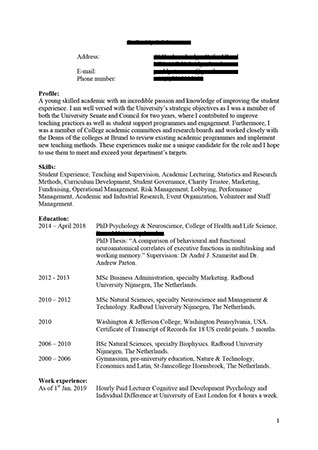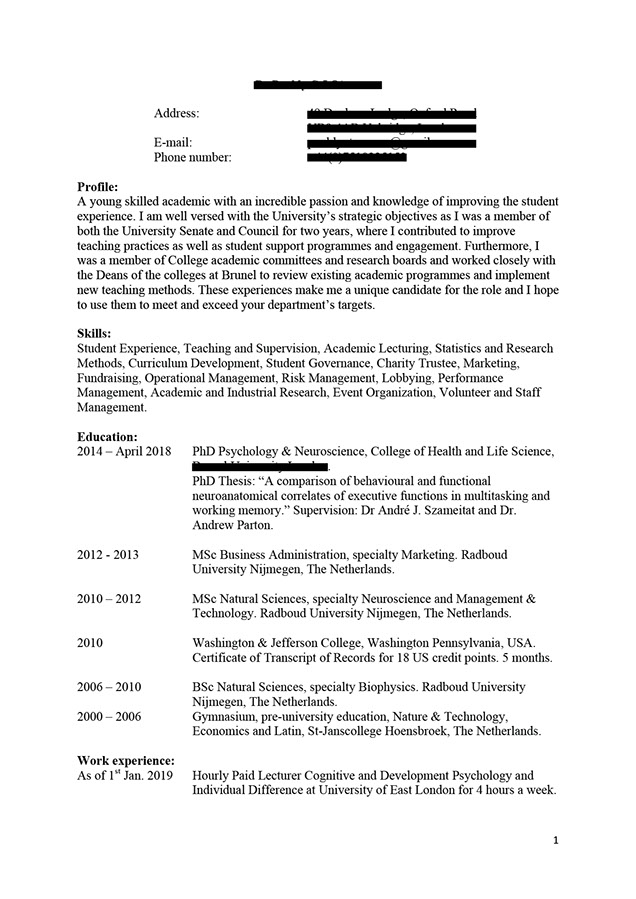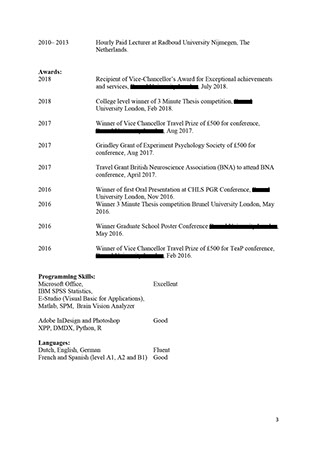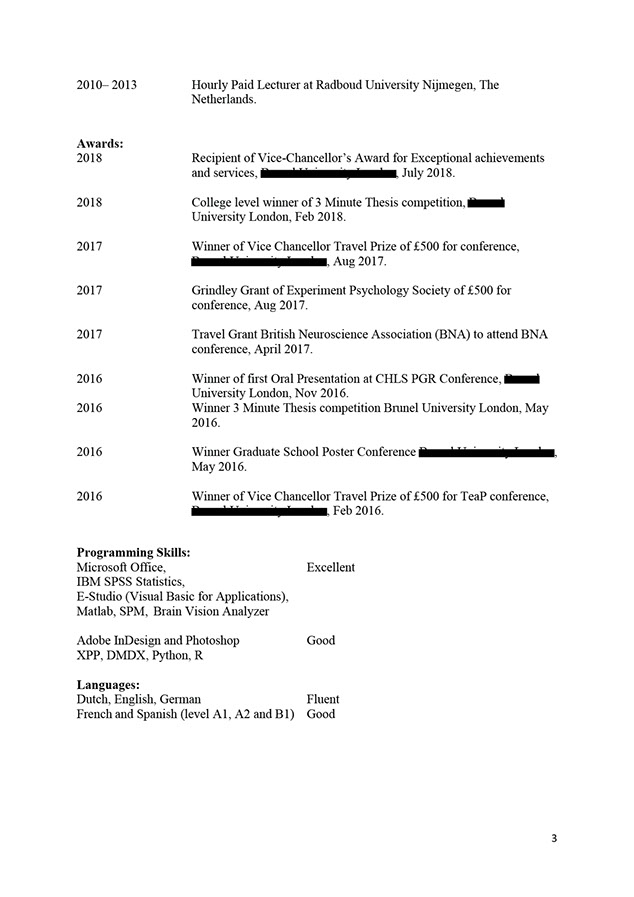Otermans Institute
at Daffodil School, Kathmandu, Nepal
Dev Aditya
Managing Director, Otermans Institute
Winner of Bengal's Pride Award, House of Lords UK 2019
Related lessons
Some of our free lessons that you should learn after completing this lesson.
If you thought our content was useful and helped you upscale today, you can leave a donation at the below. All funds collected will be donated to the Prime Minister's National Relief Fund to support Covid-19 victims.
DONATE NOW
Art of CV writing
• The standard minimum structure
• The Hook
• Make your headlines stand out
• Tips & Exercises for the 'lockdown'
Well in the last 4 months having trained at academic institutions across 3000 km in India and having interacted with hundreds of teachers and thousands of students and prospective employees, one point stood out for me. It was highly essential to train people in the art of writing a CV across the country and it was almost equally relevant for several age groups. Given the Covid19 pandemic outbreak and the subsequent closure of institutions and general lockdown making it much longer for our curriculum and training to reach schools and colleges, here is our attempt to share this art with you in the simplest form for self-learning which can improve your CV writing skills and employability manifold.
Firstly, remember a CV, like most forms of written communication, has a structure. Although many people already do know and try to follow it, what is more important to highlight is that each part of this structure also has sub-parts which gives the main marrow to the content and is unwise to ignore.
Most importantly, don’t be fearful of thinking out of the box and composing your CV slightly differently; after all you are trying to stand out, aren’t you?
Stop using a standard CV!
It is paramount to remember that writing a CV is presenting yourself to an employer on paper. Like each person you speak to is different and how you would verbally present yourself and your skills to them would differ, similarly remember to always curate your CV to the specific job you are applying to. It is wise to have a standard CV, but it is this CV that you adapt and pivot from based on your target application; the person or company you are sending that version of your CV to secure a job.
Less is more
HR departments in companies have limited time and siphon through tons of CVs. Make sure you convey all your career highlights efficiently in a very short amount of space. Besides the more you write, the more you increase the amount of content up for scrutiny. This added scrutiny can be avoided by being direct, short and to the point. Ensuring your CV is only 2 sides of A4 sheets is recommended by us at Otermans Institute.
Essentials
Don’t feel shy to add a picture at the top of your application and ensure to add your accurate contact number, email ID and full contact address.
The standard minimum structure
A standard minimum structure is required. This comprises of the following points and sub-points according to us at Otermans Institute.
1. Personal information (Essentials) – your contact information.
2. Summary/Profile – (The Hook!) this is your selling point. Have a killer summary in 150 words where you highlight your top 3 achievements and skills. More on the summary is covered under ‘The Hook’ section below.
Now, you describe your work experience and your education. The order in which you describe these, whether you highlight your academic qualifications or work experience first, is up to you and depends on what is most relevant to the job you are applying for. Remember, it is always a good idea to start your list in either category from your most recent experience and to move back the time line. Employers want to know what you are doing currently and what your experience has been immediately prior to your application. It is not their focus to know what you did in high school or 5 years ago!
3. Work Experience – For each relevant work experience you have, you create one or more sub-points and you highlight your tasks on the job, your achievements in that job (with evidence) and what you learned from that job. This will help explain how you can be a good fit for the job you are applying for.
4. Education – For each relevant education qualification you have, you create a sub-point. You write the name of the institution, your degree and your (expected) degree classification if still studying. You can also include relevant modules and projects you worked on.
Here is an example taken from an earlier CV of one of our team members.
Then you move on to the following sections. Again remember, it is up to you to pick the order and not all sections might be applicable or relevant to you and/or the job you are applying to.
5. Additional experience – This can be volunteering, courses you have taken, internships, etc. Again, it is important to be specific when describing these and we recommend using sub-points. Some standard details you can mention include when it took place, for how long and where it took place, which skills you learned by being engaging with it including evidence of its ultimate result.
6. Other achievements and awards – These include any awards you won or achievements you made. Per item, highlight when it took place and a brief sentence about what it means and why you received it. Here, you can also add any positions of responsibility you have/had.
7. Additional skills – Here, you should include relevant additional skills you have such as skills in IT and languages. As an example, we will use language skills: These include all the languages you are proficient at. You could the languages and how well you have mastered them. For instance, if you can write a language, how would you consider your proficiency; writing: beginner, advance, fluent, or native. For IT, it would be which programme you have learnt and and how well. Make sure you illustrate such points with at least one example, if possible.
8. Hobbies – These are not at all essential and should be elaborated only if you have space left on your two page CV. Otermans Institute also recommends not mentioning casual informal likings you may have, like socialising or traveling as examples, unless they fit the job requirement; for instance, if the job requires frequent traveling. You have to think about what makes you different, and present it concisely in your CV.
The Hook
Have a killer summary in 150 words where you highlight your top 3 achievements. These can be all employment oriented or a mix of awards, recognitions and previous projects. However, make sure they are relevant to the job you are applying to. This is where curating your standard CV to meet the specific job requirements of a particular application comes handy and is also a simple task that makes you stand out of the crowd.
For instance, do not mention three points only about your project management skills or a mix of your love for mountaineering for which you received a community award with past project management successes when you are applying for a legal job. Keep the points focused on the job you are applying to! You can refer to my old CV for inspiration along with another sample provided to you at the end of the lesson.
Samples can be found at the end of the lesson.
Make your headlines stand out
Start every section with a one liner that makes you stand out.
For instance, when applying for a legal internship job when I was 19, I used the following headline in my work experience section:
Having worked at 3 law firms at such a young age makes me unique, versatile and one of the most experienced candidates you will come across for the role. Here is my work experience history for your reference:
References
Normally people completely ignore this part, or add the standard and mundane phrase “references available on request”. The latter being even more risky in case you don’t have any ready references on hand and the company seeing that line requests you to send a reference letter or the contact of your referee within a very strict deadline.
So, while you should add this very same infamous phrase, ensure that your prospective referees are aware about being contacted and confirm their availability before you send off your application. Also you should possess at least two different and broadly written copies of reference letters which you can send, if needed immediately.
Finally adding a 100-word reference about you from a known figure in your field at the end of your CV is strictly optional, but extremely beneficial. It helps you directly stand out from the crowd and also shows them a reference without even having to request for one; which can expedite your application. If you cannot get a reference from an expert, attempt to get one from your previous or current employer, a lecturer or a teacher. Make sure you always provide the contact details of that referee as well for the prospective employers to contact and verify the details, if they so decide.
Tips & Exercises for the 'lockdown'
Have an updated LinkedIn profile to increase your online visibility. This will be taught separately in a different free lesson but you can already check an online tutorial using this link.
Self: Spot at least 7 differences between the two sample CVs provided below. Write a 300-word summary on which you prefer and how you can further improve it. Furthermore, check for points, if any, that were included in this lesson but are missing from these samples. See samples below.
Self & Family: Using the information given in this lesson, build a CV and share it with your family or close friends. Take criticisms positively and always ask why. Having a healthy discussion on each point of improvement highlighted by your family is the best thing you can do to have an in-depth understanding.
Also ask someone else to give you their CV for you to scrutinise and give feedback on. This will help develop your understanding skills from the HR perspective.
Sample CV
Sample 1
Sample 2
Got queries regarding this article, or want to learn more?
Write to us, and our trainers will get back to you.
Powered by Smatter | Design support by NUTS India



